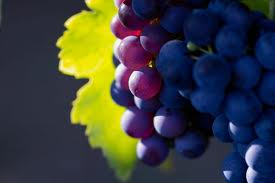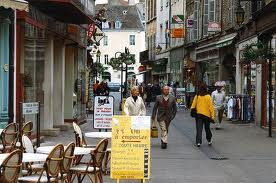This Friday — October 12 at 6:30 — at Cooking by the Book, we have our Wine Tour de France offering a guided selection of 11 wonderful French wines. David Hamburger, from the famed Acker Merrall & Condit Company here in New York City, will lead the tour. Here are the wines we will enjoy:
- Doyard Cuvee Vendemiaire Brut Champagne
- Crochet Sancerre Croix Roy Loire Valley 2010
- Joseph Drouhin Saint-Veran Burgundy 2010
- Mittnacht Freres “Gyotaku” Alsace 2010
- Roilette Fleurie Beaujolais Burgundy 2011
- Gros Frere et Soeur Hautes-Cotes-de-Nuits Burgundy 2009
- Clos Magne Figeac Saint Emilion Right Bank Bordeaux 2008
- Moulin de Tricot Haut-Medoc Left Bank Bordeaux2008
- Mas Champart St Chinian Languedoc Roussillon 2008
- Gour de Chaule Gigondas Southern Rhone 2007
- Benoit Roseau Syrah de Rosette Northern Rhone 2011
Plus, we’ll have a sampling French dishes, too.
As you can see, three of the wines are from Burgundy, a wine growing area east and south of Paris. Burgundy has a long, rich history, both in terms of wine and politics. Wine was growing there when the Romans arrived. At one point, Burgundy was politically separate from France and even more powerful, stretching from Holland down through the Rhone valley to the Mediterranean.
As a wine region, Burgundy is very special. First, when you drive through the steep hills flanking the rivers, you begin to sense what Paradise might look like. Below what looks like fertile soil there is an abundance of limestone which flavors the two dominant grapes: Pinot Noir and Chardonnay. Pinot is notoriously hard to grow, and it may have originated here. It’s a cool region, and some years suffer from too little sun. Sweet is not an adjective you’ll apply to these wines.
No other wine region in France has such a small diversity of grape types, with Pinot and Chardonnay constituting 90% of the grapes grown there. In the past, more abundant grape varietals, like Gamay, were banned by royal leaders who wanted to maintain the purity of Burgundian wines.
By 1000AD, wine growing here was institutionalized with monks and monasteries being the dominant wine producers. The benefits here were astonishing: those monks kept centuries of records of what grew best where. Their research was meticulous, well documented, and groundbreaking.
In equally famous Bordeaux, the vineyards are huge, producing tens or hundreds of thousands of bottles each year. In Burgundy, it’s hundreds of bottles, perhaps a few thousands. Why? After the French Revolution, the land in Burgundy, owned mostly by royalty and the Church, was divided among the peasants. And, under Napoleonic law, every piece of property inheritance had to be equally divided among all surviving children.
The result is that today a wine maker in Burgundy may own a few rows of grapes on one plot of land, a few more rows on another. Each “vineyard” is tiny and there are many of them. One complaint about Burgundy wine is that while the best are truly wonderful, there are also more than a few mediocre vineyards. So, a wine expert like David Hamburger, is really essential to aid you in finding those Burgundies that have created buzz and fame for centuries. In 1305, for about 70 years, the Pope lived in Avignon, not Rome. And there in Southern France, the popes and their courts feasted on the best of wines, the Burgundies.
So this Friday, come join us. You’ll taste all of France and lots of Burgundy. Discover why kings and popes have relished the Pinot and Chardonnay from this iconic wine region.
Class Cost: $75



